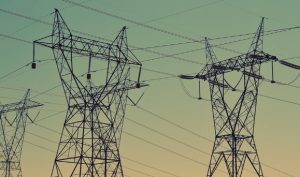
In 2024, Nigeria’s power sector witnessed significant progress in its ongoing journey to achieve reliable, sustainable, and accessible energy for its citizens. However, alongside these milestones, longstanding challenges persisted, underscoring the complexity of reforming the sector.
Newsanalytrics explores the major achievements, hurdles, and prospects for Nigeria’s electricity landscape in 2024.
Major Milestones
1. Enhanced Power Generation Capacity
The Nigerian Electricity Regulatory Commission (NERC) reported a 16% increase in available generation capacity during the third quarter of 2024. This improvement reflects progress in enhancing plant performance and grid stability, contributing to better electricity availability nationwide.
2. Strategic Partnerships and Investments
A landmark Memorandum of Understanding (MOU) was signed between the US Agency for International Development (USAID) and Nigeria’s Federal Ministry of Power. The agreement introduced a ₦115.2 billion ($75 million) grant-funded technical assistance program to support electricity sector reforms and expand sustainable power access.
Furthermore, the Nigerian Senate approved a $500 million loan aimed at improving metering infrastructure. This initiative is part of a broader strategy to acquire 10 million meters over five years, addressing revenue losses, reducing estimated billing, and enhancing efficiency.
3. Constitutional Amendments and Policy Reforms
Early in the year, Nigeria enacted constitutional amendments and regulatory changes that empower states to generate and transmit electricity independently. States such as Lagos have leveraged these reforms to develop local power markets, thereby reducing reliance on the national grid.
4. Renewable Energy Initiatives
The government, in collaboration with international organizations, promoted the establishment of mini solar grids, particularly in rural areas. These efforts aim to improve electricity access and drive the adoption of sustainable energy solutions.
Persistent Challenges
1. Access to Electricity
Despite advancements, over 85 million Nigerians remain without access to grid power, highlighting a significant gap in electricity distribution.
2. Frequent Grid Collapses
The national grid experienced up to 13 collapses in 2024, emphasizing infrastructural deficiencies and the urgent need for grid maintenance and upgrades.
3. Electricity Tariff Hikes
Consumers faced steep increases in electricity tariffs, sparking public dissatisfaction. These hikes reflect the sector’s struggle to balance production costs and financial sustainability.
4. Infrastructure Sabotage
Vandalism of critical infrastructure continued to disrupt electricity supply, increasing operational costs and exacerbating existing challenges.
5. Underutilization of Capacity
Despite an installed capacity of 13,500 MW, only about a third of this potential was transmitted due to aging infrastructure, insufficient investment, and inefficiencies within the sector.
Private Sector Investment: A Key to Growth
Experts, including Azura West Africa’s Managing Director, Edu Okeke, stress the importance of private sector participation. Electricity distribution companies (DisCos) need significant investments—estimated at $500 million each—to upgrade infrastructure, improve service delivery, and address systemic inefficiencies.
Future Prospects
1. Government Commitments
The Nigerian government has set ambitious targets, including achieving 6,000 MW of electricity generation by December 2024. While commendable, the realization of these goals hinges on effective policy implementation and investment.
2. Technical and Financial Reforms
Addressing liquidity issues faced by the Nigerian Bulk Electricity Trading plc (NBET) is critical. Clearing payment backlogs and ensuring stable financial flows can bolster the sector’s stability.
3. Sustainable Energy Expansion
The focus on renewable energy solutions, such as solar mini-grids, represents a vital step toward achieving energy sustainability and increasing rural electrification.
Conclusion
Nigeria’s power sector in 2024 has been a tale of progress intertwined with persistent challenges. While significant milestones—such as enhanced generation capacity, strategic investments, and regulatory reforms—underscore the sector’s potential, hurdles like infrastructural deficits, grid failures, and access disparities highlight the journey ahead.
To truly transform the sector, a multifaceted approach is essential. This includes fostering private sector investments, implementing actionable reforms, and embracing innovative solutions to address the deep-rooted challenges. As Nigeria advances on its path to achieving reliable and sustainable energy, the collective efforts of the government, private sector, and international partners will be pivotal.

